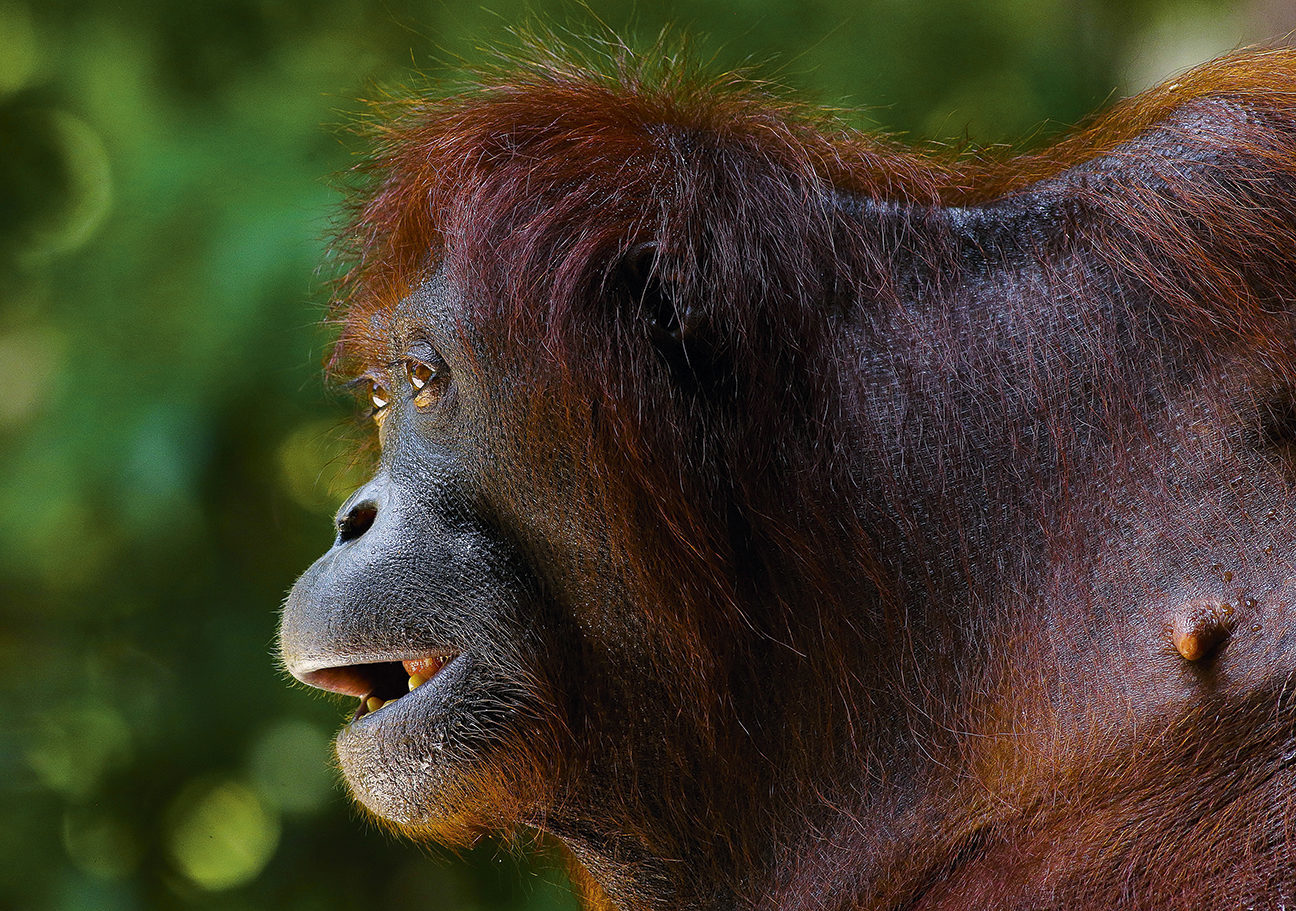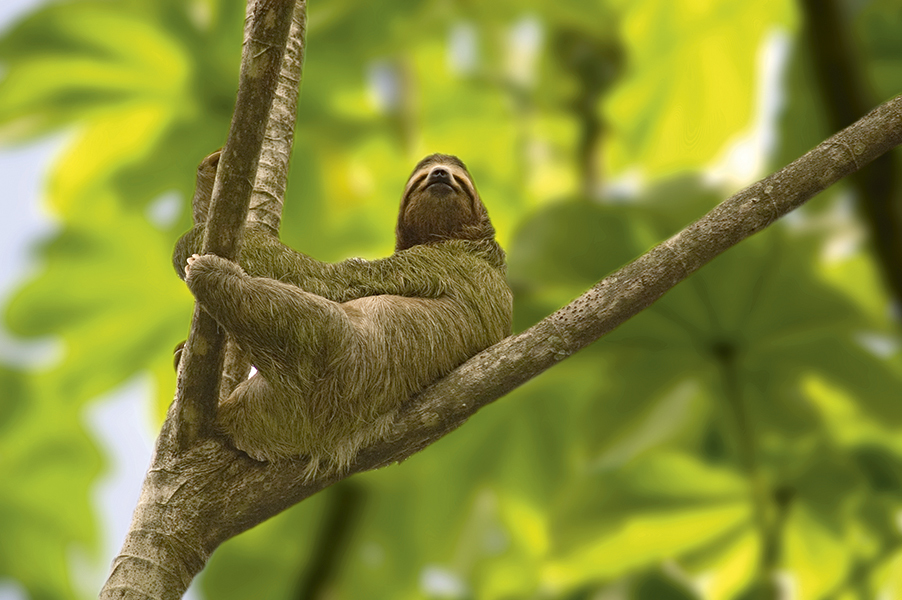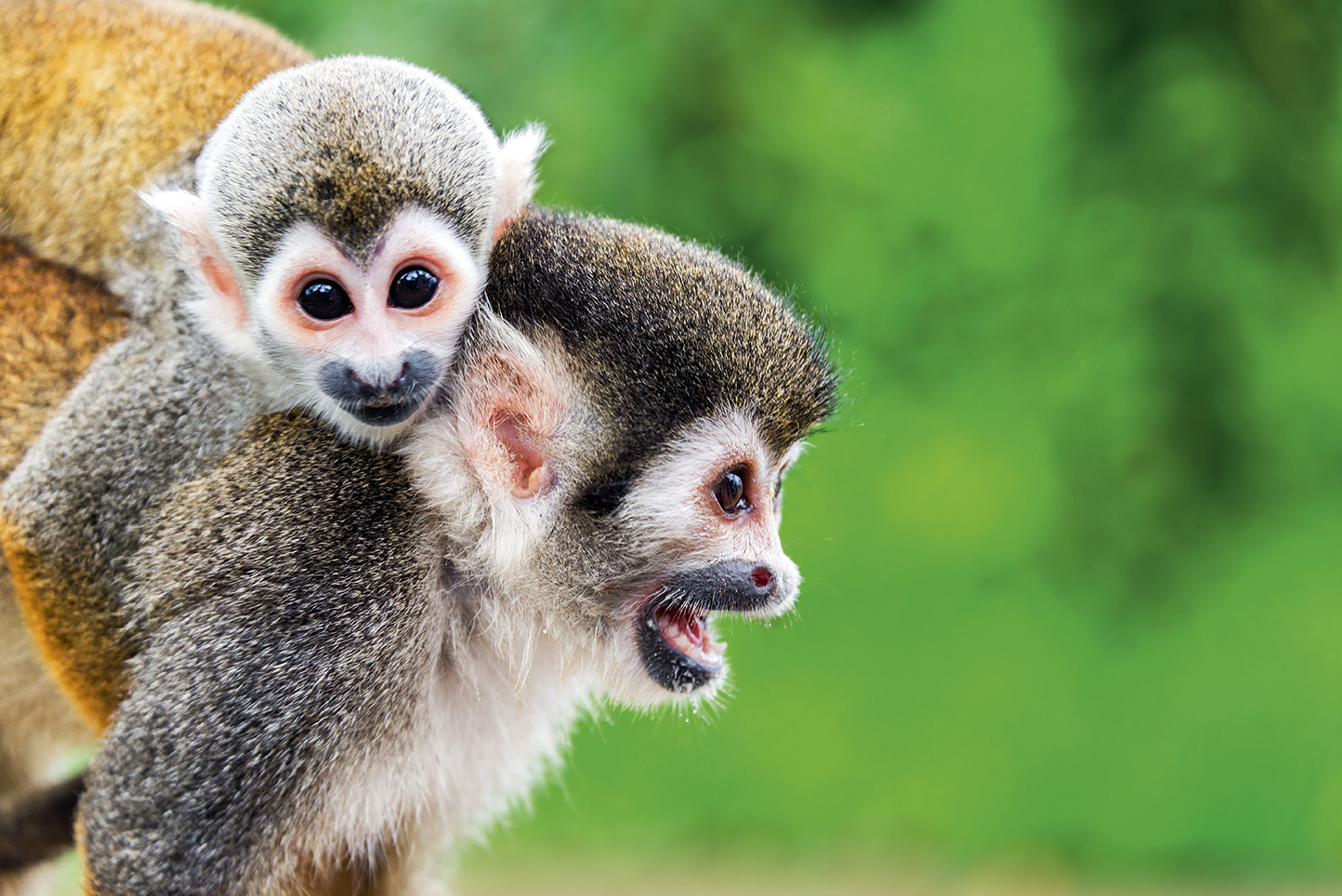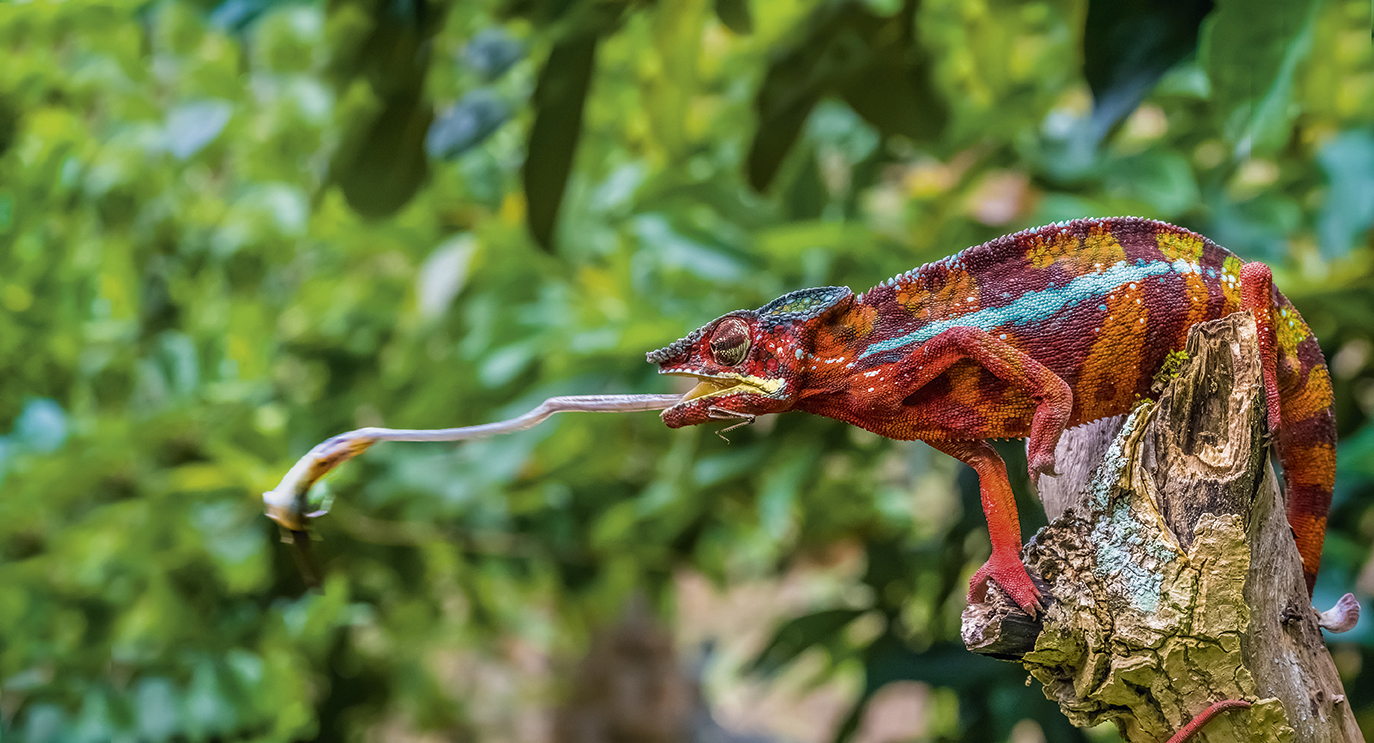Jungle Fever
What better way to escape our own narrow world than to be immersed in a completely different one? James Litston dons his khaki for four of the best jungle expeditions

What better way to escape our own narrow world than to be immersed in a completely different one? James Litston dons his khaki for four of the best jungle expeditions
Although heavily deforested, the world’s third largest island still harbours species-rich tropical jungles. Borneo is divided among three different countries (Indonesia, Malaysia and Brunei),
with the greatest biodiversity occurring in the Malaysian state of Sabah. Not that the wildlife wonders of the rainforests are necessarily easy to spot – many species spend much of their time high up in the forest canopy, while thick vegetation effectively screens ground-dwelling creatures from view.
All of which makes Malaysian Borneo’s Kinabatangan Wildlife Sanctuary so remarkable. Much of the natural forest has been cleared to make way for palm oil plantations, but Kinabatangan River’s remaining patches provide arguably the most memorable animal encounters in all of Southeast Asia.
Covering 26,000 riparian hectares, Kinabatangan’s fragmented but interconnected forest patches shelter almost a full complement of Borneo’s animal icons. Orangutans are the highlight, along with ten other species of primate that include proboscis monkeys: a pot-bellied, big-nosed beast found only here. Other forest dwellers include eagles, owls, saltwater crocodiles and eight kinds of hornbill – and because the fringe of forest along the riverbank is relatively thin, your chances of wildlife sightings are surprisingly high.
The way to experience Kinabatangan is to travel the river and channels by boat. All the jungle lodges offer day and night safaris, so it’s worth signing up for several to see the widest range of animal life. On a daylight excursion you may encounter orangutans feasting on wild figs, monitor lizards sunbathing on branches or sight lively troops of langur monkeys. By night, attention turns to crocodiles hauled out along the muddy banks, or snakes creeping through riverside twigs on the
hunt for sleeping birds. But perhaps the most thrilling animals to meet are the island’s largest: pygmy elephants, fewer than 1,500 of which are thought to survive.
Away from the river, Gomantong Cave provides a handy side-trip to see where the nests of swiftlets are harvested to make bird’s nest soup – besides palm oil, they’re one of the region’s most valuable exports. Leaving the river is a sobering experience that reveals why Kinabatangan’s wildlife is so visible: with so much land converted to palm oil monoculture, the sanctuary’s patches of habitat are all the animals have left.
Even more intimate brushes with nature can be found in Sandakan, the coastal town some two hours away that acts as the regional gateway. Besides Buddhist monasteries and its haunting Second World War history, its main draw is Sepilok Orangutan Rehabilitation Centre: the world-famous sanctuary where orphaned apes are nurtured before being returned to the wild. It’s only open at feeding time twice a day, when the boisterous animals emerge from the forest to feast on piles of fruit. This being one of Borneo’s must-sees, one visit is not enough, so it makes sense to stay within walking distance at a lodge such as Nature Lodge Sepilok (rooms from £35 per night for two adults).
It’s also worth checking out the Bornean Sun Bear Conservation Centre, a rehabilitation facility for orphan sun bears who, like orangutans, are imperilled by deforestation and poaching. There’s wildlife at large here, too – hornbills, naughty long-tailed macaques, and moths that flap past on plate-sized wings. But it’sgetting so close to the bears and apes that leaves the most lasting impression, reminding us that rainforests – and their extraordinary animals – deserve urgent protection.

A 10-night tailor-made Windows on the Wild trip costs from £2,665pp, including 2 nights at Sepilok, 2 nights in Kinabatangan and a 4-night Gaya Island beach stay, flights and most meals. A 14-night Natural World Safaris voyage on a traditional, wooden pinisi ship through Indonesia’s tropical isles, combining Sepilok and Kinabatangan (including Komodo, for its dragons), costs from £5,740pp, excluding flights.
‘The “pura vida” mindset makes for a vibrant society but also includes a healthy respect for the natural environment, which might explain why a quarter of the country sits within national parks’
The nation considered to be Central America’s safest is a biodiversity hot spot that combines easy wildlife viewing with beaches, hiking, jungle lodges and a Latin lust for living. Ticos, as locals call themselves, take their motto pura vida (‘pure life’) to heart. Not only does the mindset make for a vibrant society, but it also includes a healthy respect for the natural environment, which might help explain why a quarter of the country is protected in the form of national parks.
The largest of these, Corcovado, sprawls across nearly half of the Osa Peninsula and is incredibly diverse in terms of habitats and wildlife. Its ecosystems encompass lowland rainforests, cloud forests, mangroves and shoreline, and it’s said that 2.5 per cent of all the world’s species can be found here. Some – such as jewel-bright hummingbirds and noisy flocks of macaws – are easy to see, but hidden away in the jungle are impressive creatures such as jaguars, pumas, ocelots, tapirs and the world’s most powerful bird of prey: the enormous harpy eagle. But with some 370 bird species, 140 mammals and almost 10,000 types of insects, the Osa Peninsula landscapes are bursting with life.
It’s this extraordinary variety of animals that makes Corcovado so special. While other Costa Rican reserves feature canopy walkways or zip-lining thrills, Corcovado’s appeal is more about embracing nature in the raw. Its location in the remote south-west makes it that bit less accessible and its main attractions are hiking trails, so it feels somehow wilder, more authentic. Hire a guide if you prefer not to wander solo, keeping senses attuned at all times for the likes of monkeys, guinea-pig-like agoutis and peccaries (wild pigs) that are active during the day. Motmots, trogons and quetzals are among the neon-bright birds in the canopy, while the forest floor is enlivened by the sapphire-blue wings of morpho butterflies, emerald-green tree frogs and colourful (if tiny) poison dart frogs. And after a rainforest hike, there’s no finer reward than paddling in the Pacific on an empty, undisturbed beach with rainforest all the way down to the sand.
So prolific is life here that you don’t even have to hit the hiking trails to find it, though. At Lapa Rios Lodge whose thatched bungalows (with outdoor showers) sit within a 40-hectare nature reserve, spider monkeys, sloths and toucans are your nearest neighbours. These are animal encounters that can be enjoyed passively from a hammock while listening to the buzz of the forest and the calls of howler monkeys. Only slightly smaller is the forest reserve at Bosque del Cabo Rainforest Lodge whose spacious cottages come with the optional upgrade of Pacific Ocean views. Or else try Casa Corcovado Jungle Lodge which is perhaps the region’s most upmarket property, whose 14 colonial-style, clifftop bungalows are so remote they’re only accessible by boat. All this far-from-the-madding-crowd exclusivity comes at a premium (this is one of Costa Rica’s costlier areas to stay), but splash out on a high-end lodge and your jungle exploration will come without the slightest compromise on comfort.
Serious nature-lovers can go further into the forest and stay at one of the remote ranger stations in the wildest corners of the park. There’s even the option of giving a little something back to nature by volunteering for a few days with the Corcovado Foundation whose rangers patrol the beaches to monitor sea turtle nesting activity.

Llama Travel’s 14-night Best of Costa Rica & Corcovado Coast itinerary, combining 3 nights in Corcovado with volcanoes, cloud forests and the Caribbean coast, costs from £3,278pp, including flights. Latin America’s 14-night Remote Costa Rica, Osa Peninsula & La Sirena itinerary, which takes you deeper into Corcovado and includes an overnight stay in isolated La Sirena Ranger Station, costs from £3,795pp, excluding flights.
'What really draws visitors to Colombia’s frontier town of Leticia is its proximity to Amacayacu National Park, where the wonders of nature are on full display and canoe trips and community visits await’
Where better than the world’s largest rainforest to seek an immersive jungle experience? The Amazon ecosystem covers a huge chunk of Brazil and beyond into countries including Ecuador, Colombia, Venezuela, Peru and Bolivia. Colombia’s portion encompasses some 400,000sq km (around a third of the national territory) and it’s a region that’s awash with wildlife and steamy, tropical beauty. Colombia only has a toehold on the river itself – in the far south-east of the country at Tres Fronteras, where its border meets with those of Brazil and Peru.
The frontier town of Leticia (a two-hour flight from Bogotá) sits on the border and in fact merges imperceptibly with the Brazilian town of Tabatinga: you may only realise you’ve wandered across to a different country when the Spanish you hear spoken around you suddenly gives way to Portuguese. The town’s attractions range from its colourful port and covered marketplace to central Parque Santander: famed for a nightly ritual when thousands of parrots come to roost (a spectacular if deafening experience). What really draws most travellers to Leticia, however, is its proximity to Amacayacu National Park, where the wonders of nature are on full display, and canoe trips and community visits await.
Timing is everything when visiting Amacayacu. Roughly speaking, the first half of the year is the wet season, when the forest floor disappears under metres of floodwater; in the drier months, the thing to do is explore its network of footpaths. It’s this seasonal inundation that lends floodplain forests their biodiversity, however, as the silt left behind by the floodwaters makes the habitat highly productive, in turn providing homes for a huge range of species. Creatures to look out for include pink river dolphins (found only in the Amazon and Orinoco basins), freshwater turtles and manatees, as well as eight types of primate – you may get to see pygmy marmosets, which are the smallest monkeys in the world – and unusual birds such as the prehistoric-looking hoatzin.
These natural riches also support a diversity of people. All along the riverbank are indigenous communities representing, among others, the Ticuna, Cocama and Yagua tribal groups.
The people who live here welcome interaction with the outside world, which makes visiting their villages a highlight of a Colombian Amazon experience. In Mocagua, you can admire the paintings of birds and animals that decorate the houses, then browse handmade ceramics and baskets or sample home-cooked food in a family-run restaurant. A nearby monkey sanctuary provides the opportunity for up-close encounters with primates that have been rescued from captivity, with the ultimate aim of releasing them back to the wild.
Further upriver lies pretty, car-free Puerto Nariño, which provides a glimpse into a culture that has existed here for some 10,000 years. A museum run by the Natütama Foundation (a word in the Ticuna language meaning ‘everything under the water’) offers insight into Ticuna traditions as well as the unusual creatures that inhabit the flooded forest. There’s also an observation tower for eyeballing life in the forest canopy, plus the chance to visit wildlife-rich Lake Tarapoto (best accessed via a traditional, low-slung peque-peque boat).
The place from which to discover all this is the simple but characterful, six-room Calanoa Jungle Lodge overlooking the Amazon. Its open-sided, palm-thatched bungalows blend traditional techniques with contemporary style, while the restaurant serves a fusion of Brazilian, Colombian, Peruvian and indigenous cuisine. With solar power, cool-water showers and elegantly draped mosquito nets, this is jungle living with considerable class.

Reef & Rainforest’s 13-night Natural History Highlights of Wild Colombia itinerary, combining 3 nights in the Colombian Amazon with the wildlife-rich Llanos grasslands, Caribbean coast and Sierra Nevada de Santa Marta mountains, costs from £5,828pp, excluding flights. Following more of acultural theme, a 12-night Off The Beaten Track Colombia tour, taking in the indigenous and colonial heritage of Villavieja, San Agustín, Popayán and the Amazon, costs from £3,130pp, excluding flights.
'You’ll hear the lemurs before you see them: their haunting, foghorn-loud wailing calls resound atmospherically through the forest. It’s the most thrilling of welcomes’
With its thick rainforests, tropical dry forests and stately baobab trees, probably the best known thing about Madagascar is that it harbours a mind-boggling number of unusual species found nowhere else on Earth, which makes for a fascinating visit. It’s the long history of isolation that makes this Indian Ocean island unique. Since splitting from the African continent 160 million years ago, it has evolved its own distinct ecosystems, inhabited by a diversity of endemic animals and plants.
It’s estimated that 90 per cent of flora and fauna on the island are found only here, with the biggest and most obvious draw being lemurs. The forebears of these ‘prosimian’ cousins of monkeys and apes once thrived in Africa, but found themselves out-competed into oblivion. Madagascar broke away before higher primates appeared on the scene, however, leaving the lemurs to diversify into over 100 species. The best place to seek them today is Andasibe-Mantadia National Park, which lies around a three-hour drive from the capital, Antananarivo.
Andasibe-Mantadia covers two distinct areas of forest. Mantadia is the northern part, which is more rugged and receives fewer visitors, while Andasibe (also known as Perinet) is famed for one lemur species in particular: the indri. These black and white, metre-tall mammals are notoriously difficult to spot, but Andasibe is home to several troops that have become accustomed to humans, which means they can be approached and observed without causing them stress. Better still, experienced local guides know exactly where to find them, so sightings of these impressive animals are more or less guaranteed. Although these are the largest lemur species in existence, you'll hear them before you see them: their haunting, foghorn-loud, wailing calls resound atmospherically through the forest. It’s the most thrilling of welcomes.
Most Madagascar tours include a good three days in this area in order to experience it in depth. Guided walks – both by day and night – are the best way of connecting with Andasibe’s wildlife, especially between September and May when the lemurs are most active. As well as the indri, there are at least ten other lemur species to look out for, alongside a supporting cast of giant butterflies, colourful chameleons and over 100 types of frog. Among the more noteworthy critters are Parson’s chameleons (one of the world’s largest), with tiny nose-horned chameleons at the other end of the spectrum, while eye-catching creepy-crawlies on the forest floor include giraffe-necked weevils and giant millipedes.
There are additional species to encounter in the primary, old-growth forests of Mantadia, where the elusive and acrobatic, black-and-white-ruffed lemur is a speciality. The beautiful and rare diademed sifaka (a cousin of the indri) is also found here, while commoner species one might expect to meet include brown and grey bamboo lemurs. Night-time tours reveal a very different animal community: this is when dwarf lemurs, mouse lemurs and woolly lemurs come into their own, along with other nocturnal beasts such as extraordinary-looking leaf-tailed geckos.
The most magical place to stay hereabouts is Mantadia Lodge whose hilltop location provides a viewpoint that reaches across the forest canopy. Expect to be woken by the serenade of the indri each morning, making up for the early reveille later on with a nap beside the infinity pool (or a treatment at the spa). The restaurant celebrates Malagasy cuisine, so sample a steak from the horned zebu cattle that you’ll see all over the countryside, and don’t miss the spicy noodle soups that fill Madagascar with flavour.

A 14-night Rainbow Tours tailor-made Classic Madagascar Overland tour, including a 3-night
stay at Mantadia Lodge and taking in Isalo and Ranomafana National Parks, costs from £4,170pp, including flights. A 13-night, small-group G Adventures Highlights of Madagascar tour, following a similar route, combining Andasibe with Isalo and Ranomafana, costs from £1,385pp, excluding flights.
Subscribe and view full print editions online... Subscribe